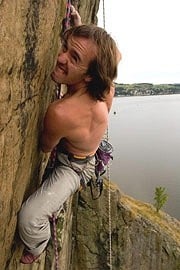
Back in October 2006 UKClimbing.com asked me to write an article about how to use an indoor wall wisely and they set up a forum thread to gather UKC user's burning questions on the subject (read it here). Its funny reading back through the whole thread just now, in one go. It's really hit me again just how much there is to training for climbing, and sports science in general. In your questions I can see so many themes: practical problems, some basic but massively important questions and some people that sound like they need to be asking a different question. I'll jump in at the deep end and deal with the fundamental ones first. In some of my answers I have followed the UKC forum convention of directness so be warned!
SidH asked – When training at the wall by e.g. steep bouldering, how much should you push yourself? Should you try to do everything statically, or should you be pushing yourself to your limit (and therefore slapping for everything)? And should you do more easier problems or less harder problems, assuming you enjoy them both equally? Oh, and slightly different - what's your best recommendations for training in a house where you can't put up a fingerboard or anything fixed? A doorframe, anything else?
Training is all about forcing your body to respond by overloading it. All year round we have to work our bodies harder, perform movements better and for longer than before in order to keep moving up the improvement ladder. There is no shortcut to this and the sooner you internalise this idea, the better for your climbing. But what does 'pushing harder' mean in a practical context? In the area of physical strength and fitness, it means more load, but specifically, the correct type of load. Climbing well demands some static moves and some dynamic ones. You have to be good at both, so you have to recreate this in the training.
Technique training is all about reinforcing good habits and undermining bad ones. Good habits are things like 100% concentration, mustering as much effort and focus as you can and executing moves with care and precision. If you can't develop and reinforce these good habits in everyday training, they won't magically appear when you want to climb your dream route. In fact, in this situation, which is likely to be accompanied by stress, your armoury of techniques you can throw at the climb will be at its most limited – those you habitually use and are familiar with. If you habitually shout 'take' because you haven't practised falling onto bolts and are thus still nervous about it, this is what you will always do, until you do something about it.
OK while I've gone off on a bit of a tangent and I'm talking about habits, let me explore it in a little more detail for a second. Habits in people are weird things, they are so easy to break out of, yet their inertia is so strong. The reason for this is complex but basically people begin to produce excuses for their situation that removes the responsibility from themselves and places it on circumstances. Yet virtually all life experience shows us that we have extraordinary control over circumstances. All that stops us is taking that little leap of deciding to exert that control. Ever been persuaded to do something a little outside of your comfort zone by a friend or even been too embarrassed to chicken out and then looked back and thought 'I'm glad I did that'. That feeling is quite refreshing isn't it? It puts a bit of a spring in your step for a while. I think people who progress in sport, or anything for that matter, remember that good feeling and look for it. After a while, breaking out of habits, or in other words 'personal barriers' becomes the comforting feeling itself, rather than staying inside the safety cocoon of mediocrity. That might come across as verging on elitist, but a) you are reading an article about training and b) the hard facts are that there are no shortcuts to improvement; it isn't possible without showing a bit of backbone. Everyone makes excuses, you can hear them all the time if you listen. Keep one ear on the ones coming out of your own mouth and every so often you have a 'wake up call' moment. Right there is the scaffold of your motivation to make a break to the next level.
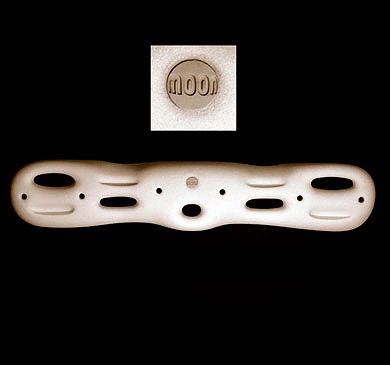
Necromancer 85 asked - If training for trad routes are steep boards going to help a large amount or are you better off working at more realistic angles?
Good Question. Unfortunately the answer isn't so simple. It really depends much on the characteristics of the climber. Many climbers I have seen and coached who are predominantly into trad do not know how to pull hard. When I am on coaching mode and I tell them they should adjust their climbing style, they respond: “but you have to be in control on trad climbs because they are dangerous”. Control and level of aggression and delivery of effort are completely different entities. Watch a video of a top climber and look for the level of control. Even to a relatively untrained eye the level of control is obviously remarkable. Yet the level of effort and in some cases aggression is also there simultaneously. There are two issues here. Firstly, it is important to separate training and performing at certain times. It's true that some very bold routes demand that the climbing is well below your physical limit and that you move slowly and carefully over the rock. However, if we choose climbs that are not challenging when training (i.e. safe situation), then there is no stimulus for the muscles to become stronger. Also, remember that to push our grade we will have to eat away at the 'reserve' of ability we keep in trad and step a little nearer our physical limit. To do that safely we need to spend more time learning where that physical limit is by spending more time near it in our training. In summary, training needs to be intense enough to stimulate the muscles and teach us how to perform at our limits. So most climbers should mix up steep and not so steep bouldering.
LMB asked - Do you modify your diet in any way to help improve your training? What are the sorts of foods you consume on a typical day?
Prana asked - I'm sure Dave's diet would be interesting, as would his views on how important animal protein is for peak performance.
I'll answer the issue of diet in the wider context of 'taking care of yourself' as it's so important. The British are a bloody unhealthy lot. Compared to the continentals we drink too much beer, eat fatty, salty processed food, work too hard and stay up too late. So why in this age of awareness of science have the messages not got through yet? Cultural inertia. It's riddled through our society, but you even see it in the sport of climbing. There are climbers still out there who follow the myths (and that's all they are) that the likes of Whillans and co. drank all night and then produced amazing climbing performances. Of course it is not really true if you look closer and know the details. Anyone who thinks differently is fooling themselves. Prana's question hints at the effect of the surrounding culture on our habits and priorities. The protein drink industry had recently successfully upped the profile of protein in the public consciousness among sports people in recent years. This has convinced a lot of people that they need to waster their money on expensing protein drinks and powders. The lessons from this is that if you want to become better at climbing its important to be aware where your influences come from, because its difficult not to be affected by them. If all your mates climb VS, think that Scottish V is a hard grade, and that protein shakes make the difference between V5 and V6, you are more likely to hold that attitude too. If you happen to live in the Basque country and the average grade for women 8b and men 8c and everyone trains and encourages each other instead of ripping the piss every time you say “no that's enough beer for me tonight”, then you will probably manage this level too.
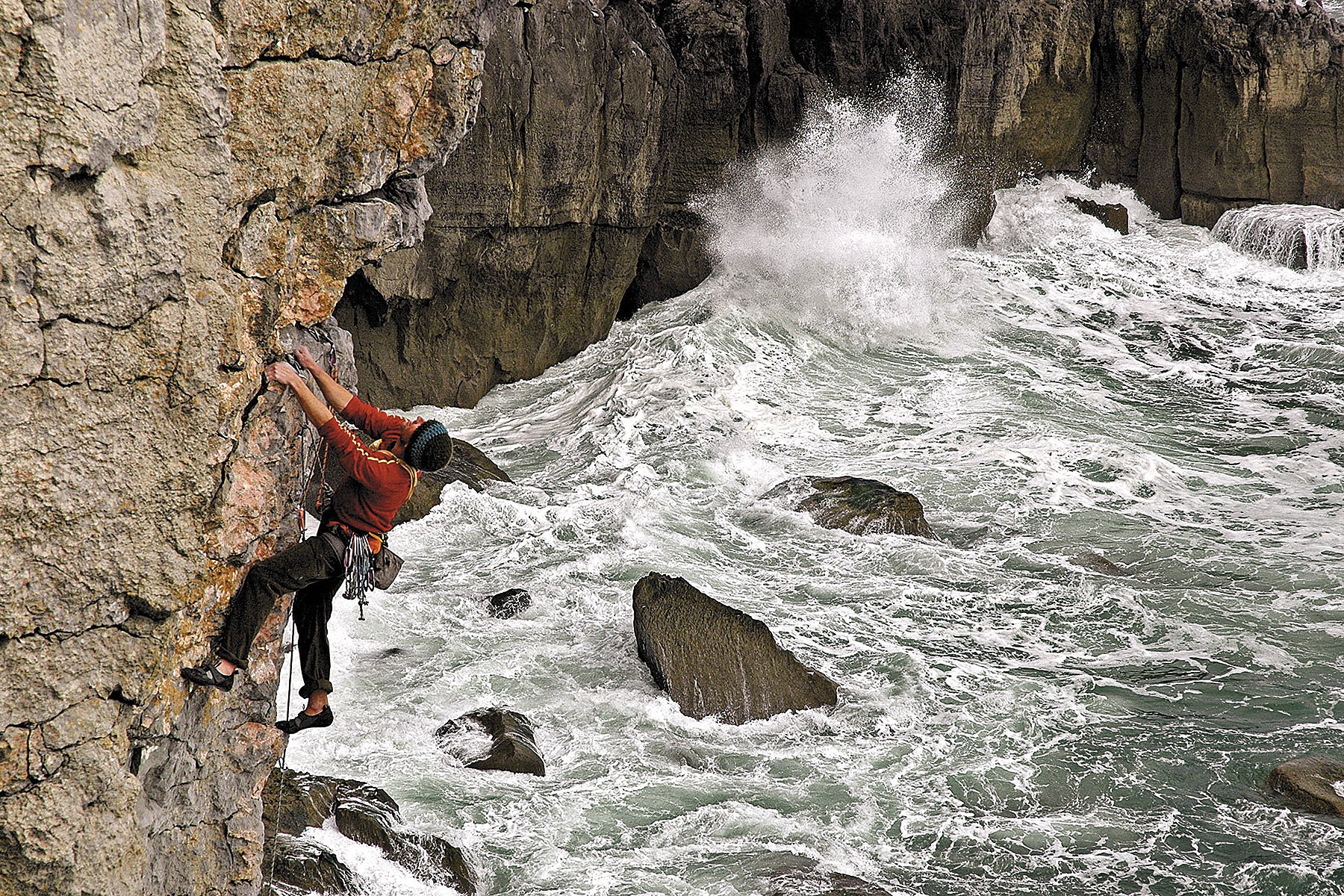
Es asked - I'd quite like to know about what you can do in quite a short space of time to get the most out of a climbing holiday.
If it's a bouldering trip then you have to remind the body how to pull really hard (in sports science speak – improve neuromuscular recruitment). This is all you can do in a few weeks off the couch. If its short (up to 25m) sport climbs then get straight down to the wall and run laps on a 30-40 move steep bouldering circuit that is hard enough that you are breathing hard, getting pumped but can complete 6-8 laps before your arms die. Repeat at least 3 times a week and the endurance will come remarkably quickly. If the routes are long then mix up the anaerobic laps with some aerobic ones; up, down and back up a steep leading wall route. Don't mess about with this type of training – you need to work yourself hard or nothing will happen. Hard breathing, bulging eyeballs and hot forearms are the symptoms of a good endurance session.
Enty asked - I weigh 12.5 stones but I reckon if you cut me in half the legs would weigh at least 9.5 stones. Is there any point me ever going to a climbing wall and will I ever be a good Sport climber. At the age of 38 can I forget about 8A?
I would say the prospects of you climbing 8a have nothing to do with your age and everything to do with your attitude. Responsiveness to strength training does not diminish through life. Even maximum potential for strength development drops off extremely slowly and only starts to become significant at recreational level (and that includes F8a!) at age 60-70. Anyone has the potential to climb an 8a in quite a short space of time even if they start climbing at 38 given reasonable technique and some sustained effort for a while. If your legs weigh 9.5 stone there are two possible reasons. Either they are very fat or very muscular. If very muscular this is great, you already know how to discipline yourself for strength development. All you need to do is to switch the effort from your lower body to your upper body and the leg muscles will diminish while the arms get bigger. If your legs are fat, just eat less fatty food while increasing your level of activity. Weight loss/gain is governed by a simple ratio: calories in vs. calories out. It is simple and easy once you have decided to do it. The main stumbling block between you and 8a will be erasing the “is there any point?” attitude.
...As you can see, if I carried on answering the individual questions this article could get very long. But can you see the theme in my answers? Sure there are some specific nuggets of knowledge that I have gleaned over the years. But in the main I have been talking about things like attitude, approach and effort. Without these, even the most knowledgeable climber will go nowhere. But armed with these, any climber will learn the nitty gritty just by being amongst the sources of information regularly. Training can be summed up by “what you do, you become”. If you avoid the steep wall because 'it's only for good climbers', you will never be one of them.
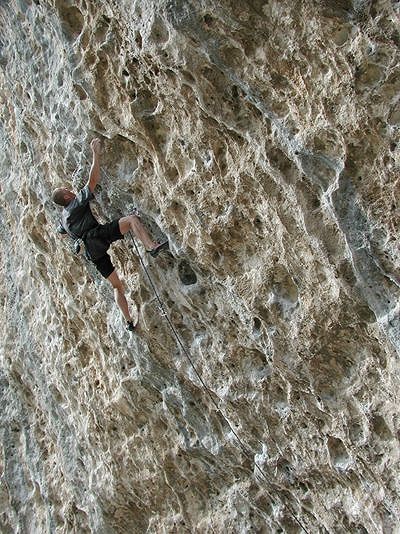
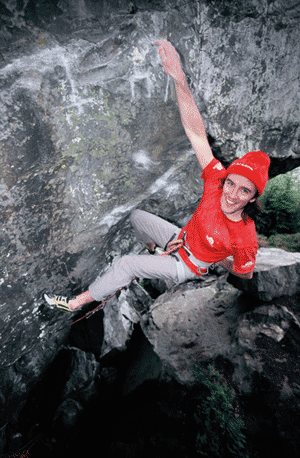
You can read about his groundbreaking ascent of Rhapsody, the UK's first E11 at the UKClimbing.com article, The Modern Taditionalist here.
This ascent was imortalised in the award winning film, E11 produced by Hot Aches. Read the UKClimbing.com review of E11 here



Comments